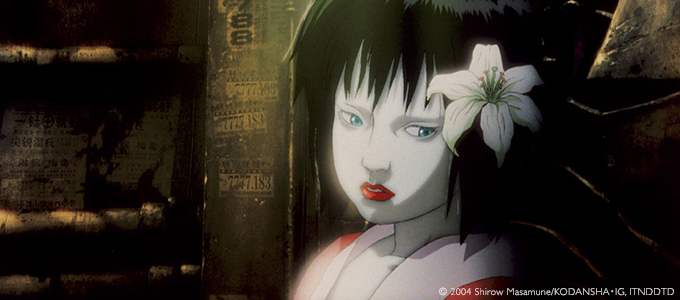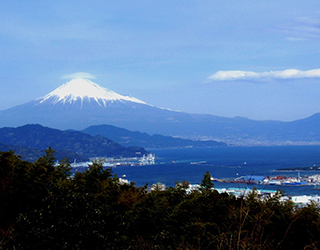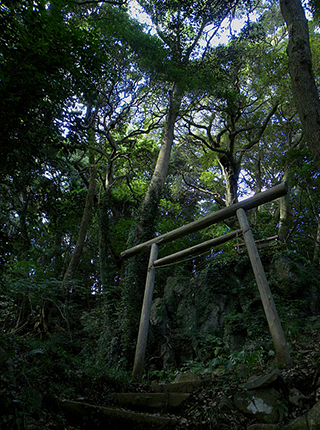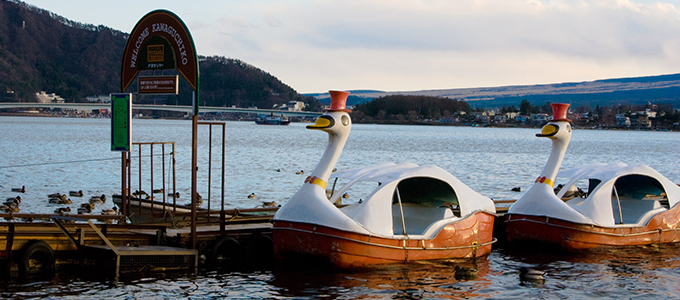
Scenery Projects Memories of Love
For a person born in Tokyo, is it possible to refer to it as “home?” For Oshii who grew up in Tokyo’s Omori and lived there through high school, answering that question brings up complicated feelings that are hard to hide. Even now he doesn’t want to go back to that town, although his own mother is still there, he replied.
“For our generation, it is generally considered hard to look back at childhood. There was no food. It was such a tough time to be a kid. I was bullied a lot and even beaten up. I never felt like I was underprivileged, but in some ways, this is a town I made into a place I had to leave. Well, I wouldn’t be exaggerating if I said that it is in the top three places I would not want to go back to.”
“There’s nothing nostalgic about my childhood self. Reconvening with myself in the past sounds awful. I don’t want to see me before I became human. I would like to simply forget all that. I have no desire to be young again, nor do I in any way wish to heap praise on the ‘me’ of the past. Rather, I feel like punching him.”
“That’s why I hate children’s movies. People make films to recreate a more desirable childhood or adolescence, but that’s all a delusion. Like The 400 Blows by François Truffaut or Cinema Paradiso by Giuseppe Tornatore, those are all lies. Blatant lies. I know this very well because I’m a director, too. ‘Shameless lies,’ I say to myself. If it’s not false, it’s not a movie. There is no use making up lies unless it is for the entertainment of others. That is our job.”

Our memories often fool us. That is because our desires and yearnings unconsciously rewrite the memory data in our brains. For Oshii, who is a visual creator, it seems as though scenery and places only exist inside a shared collective memory, like a fleeting afterimage.
“People recognize places because they usually come in a set with something they love. For example, the people of Shizuoka deeply love Mt. Fuji. So, even without knowing one another, people can feel connected by just talking about Mt. Fuji. A couple that fight all the time and hardly get along can manage to communicate if it’s about their beloved child. ‘You are the only person I could talk to about my child.’ The ability to have something like that is very important.”
“Unfortunately, actual scenery and places are lost with time. A street, one day, may become a different road or even Mt. Fuji may not exist forever. Well, it just seems like at least Mt. Fuji will last forever.”
“For example, in the case of Gabu (his beloved Basset Hound Gabriel who died in 2007 that often appeared in his work), she was born and lived until she died at my home in Atami. To this day, even after she’s gone, there are scenes of her in my house. Like, oh, here she used to lie down showing her tummy. Our attraction towards ‘home’ comes in a set with time and memory spent inside the home with our loved ones.”
“So the loving bond with deceased pet dogs and cats connects our memory to the space and time that we shared with them. If it’s too hard to stay there, we can relocate. Or as long as the bond lives on, we may not want to move from that place. Painful times are the very proof of those memories. Once that pain is forgotten, it signifies that the memory is lost. That is when they (the pets) really leave.”
“The fact that they are still lingering after their death means that they remain as our pain. As long as the sense of loss persists, they live in our memory and within us. Therefore, we mustn’t bury that memory. That’s the same for places and scenery as well.”

With Gabriel gone, Oshii says that now on the weekends he walks with his beloved dog Sarah, in his neighborhood in Atami. He has a set course he walks each morning and evening.
“Behind my house there is a local tourist attraction, Izuyama Shrine, and behind that there is an inner sanctuary (known as the Shirayama Shrine) that is actually not that well known. The mornings there are foggy, and it’s way in the back so not a lot of people go near there. It's a peculiar place where Totoro may appear.”
“There is nothing obvious out front mentioning that this happens to be a sanctuary. It only reads ‘God resides here so let’s keep it clean.’ I personally call this place ponpoko shrine (signifying its mystic nature) and when I walk with Sarah, we always go through there. That place could be somewhere that could possibly contain our shared memory, and the memory of her.”
Lastly, on the memory of the woman he loves.
“The first time I ever met and spent time alone with my daughter (who was living apart from him) was before she entered elementary school. About 20 years later, I remember being so shocked to see her all grown up, when we met again in an ordinary café in Shinjuku. But there was nothing dramatic about it. ‘What would you like to order?’ ‘I will have a coffee, I guess.’ Reuniting is just like that. It is never like the movies.”
“I remember it very well. I think it was the time when she suddenly paid a visit to the studio by Lake Kawaguchi. We were working on tracking the music for INNOCENCE. The next morning when I was gazing at the garden from the porch of the room I had stayed in, I saw her walking in the distance. I squinted to see better through the thick fog, and I saw a young man walking next to her. That turned out to be her current husband (the writer, Otsuichi). At that moment I realized that our parting was approaching, even though we had just reunited again.”
After saying that Oshii’s expression seemed both happy and sad. At the very end, he confessed his own projected memory of love. It was, needless to say, like a scene from a movie.
(Interview: Manami Iiboshi, Translation: Mika Anami)
